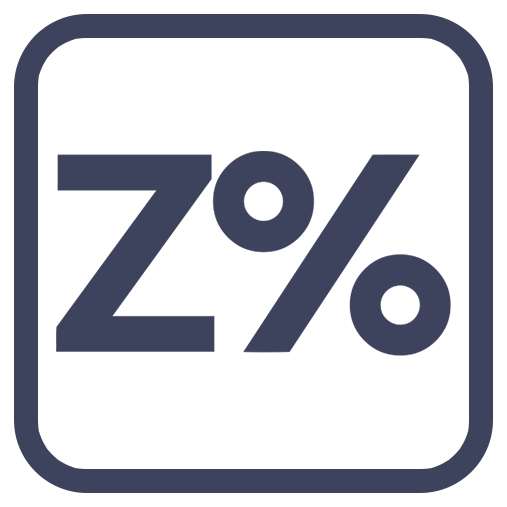-

- Interest Rate3.75
- Inflation Rate MoM0.3
- Inflation Expectations3.2
- Retail Sales MoM0.2
- GDP Growth Rate3.8
- GDP m/m
- Manufacturing PMI52.2
- Services PMI 54.1
- Unemployment Rate4.4
-

- 0.5Interest Rate
- 0.4Inflation Rate MoM
- 2.4Inflation Expectations
- 1.6Retail Sales MoM
- 0GDP Growth Rate
- GDP m/m
- 48.7Manufacturing PMI
- 53.2Services PMI
- 2.6Unemployment Rate
Day Trading
Short Term/Scalp Opportunity
![]()
Waiting for confirmations
Swing Trading
Long Term Opportunity
Waiting for confirmations
The US Dollar (USD) is the most widely traded currency in the world and the primary reserve currency. It is the official currency of the United States and is often seen as the global standard for trade and investment. The USD’s price is influenced by the monetary policy of the Federal Reserve, inflation levels, and interest rates. Its dominance in global trade makes it highly correlated with other major currencies, especially the Euro and Japanese Yen. Key impact parameters for the USD include US economic growth (GDP), job market conditions, consumer spending, and the Fed’s policy decisions. As a safe-haven currency, the USD often rises during periods of global risk aversion. Its price is also sensitive to geopolitical events, such as US government policy changes and international conflicts.
The Japanese Yen (JPY) is the official currency of Japan and is one of the most traded currencies worldwide. Known for its stability, the JPY is often seen as a safe-haven currency in times of global uncertainty. The value of the Yen is closely tied to Japan’s economic performance, particularly its export market, and monetary policy set by the Bank of Japan (BOJ). The JPY often has an inverse relationship with the USD and Euro, strengthening during periods of market risk aversion. Important factors influencing the JPY include Japan’s GDP growth, inflation, and trade balance, with a focus on export-driven industries such as automotive and electronics. The Yen can also be impacted by geopolitical tensions, particularly in East Asia, and by changes in US interest rates.
 USDJPY Analysis
USDJPY Analysis
Introduction
The USD/JPY is one of the most traded pairs and is influenced by US interest rates, Japanese economic performance, and geopolitical risks in East Asia. The Japanese Yen is often viewed as a safe-haven currency, and the USD/JPY may appreciate in times of global risk appetite or vice versa. The price of the pair is impacted by Japan’s export market, including technology and automobiles. The USD/JPY tends to have an inverse correlation with gold, as investors flock to safe-haven assets.
Fundamentals and Interest Rates
The Federal Reserve policy is Dovish with the (FED) current Interest rate 3.75%. Latest change was Dec 10, 2025 (-25bp)%.
On that side the Bank of Japan policy is Hawkish and (BOJ) has set its interest rate to 0.5% by latest change, Jan 24, 2025 (25bp).
(FED) Higher interest rates generally lead to higher returns on investments denominated in USD. This tends to attract foreign capital into USD assets.
Based on the economic and macro fundamental data, The Fundamental Bias of USD is -- Neutral and for the JPY is -- Neutral.
Ziwox considering Neutral bias for this asset and we predict side movement in the long-term.
Our Ziwox A, mid-term Fundamental Score for USD is -11. and Fundamental Score for JPY is 10. So, base on the Fundamental Score, we predict mid-term downside price movement.
Market Overview & Performance
In the current trading session, "Sydney & Tokyo", Market risk sentiment is Classic Risk-OFF. The Gold and Switzerland Frank recorded the strongest performance, while the New Zealand Dollar and Australian dollar are weakest so far.
Currencies performance vs US dollar "USD"
Gold "XAU", recorded a 0.27% increase against us dollar.
Euro "EUR", performance has been -0.01% down so far
Pond "GBP", performance has been -0.09% down as of now
Australian dollar "AUD", has dropped by -0.22%
New Zealand dollar "NZD", has dropped by -0.31%
Japanese YEN "JPY", experienced 0.01% rise
Swiss franc "CHF", experienced 0.03% rise so far
Canadian dollar "CAD", has lost -0.04%
Market risk sentiment is OFF, Investors seek safety, favoring safe-haven currencies and assets while selling off riskier investments.
Market Sentiment and Positioning
USD COT (Commitments of Traders):
Institutions Net Position on >U.S. Dollar Index is -16347 included 18448 long, 34795 short and -239 position changed from last week.
So they mainly have a bearish view on this asset and sold USD for lower prices in long-term.
Last week -239 repositioning Indicates more sell positions and price pressure in short-term.
JPY COT (Commitments of Traders):
Institutions Net Position on >Japanese Yen is 26517 included 169218 long, 142701 short and -4640 position changed from last week.
So they mainly have a bullish view on this asset and bought JPY for higher prices in long-term.
Last week -4640 repositioning Indicates closing positions, short-term profit-taking, or a general pessimism about prices.
Retail Traders:
Crowd traders or Retail traders are bullish on the USDJPY with 63% 37% ratio. 0 long pos and 0 short position.
We generally adopt a contrarian approach towards crowd sentiment and we give probability USDJPY prices may decrease.
Technical Levels and Support/Resistance
The USDJPY pair is approaching a critical technical support level near 154.484.
Technical trend is Sell, So If the pair continues to weaken, this support could become a significant area to watch for potential reversal or consolidation.
On the upside, there is key resistance near 156.328. Technically, If the pair continues to the upside, this resistance level could become a significant area to watch for sell entery potential.
Unlock all Ziwox Terminal features with affordable subscription
Our forecasts, signals, and trade opportunities are provided to help you stay informed, but we do not take responsibility for any potential losses.
Additionally, we do not offer financial or investment advice in this section of the website.
Before engaging in foreign currency trading, its important to carefully consider your own investment goals, experience level, and risk tolerance.
We want to emphasize that we cannot be held liable for any loss or damage, including potential profit loss, that may result from using or relying on this information. Your decisions are ultimately your own, and we encourage you to approach trading with caution and awareness.









